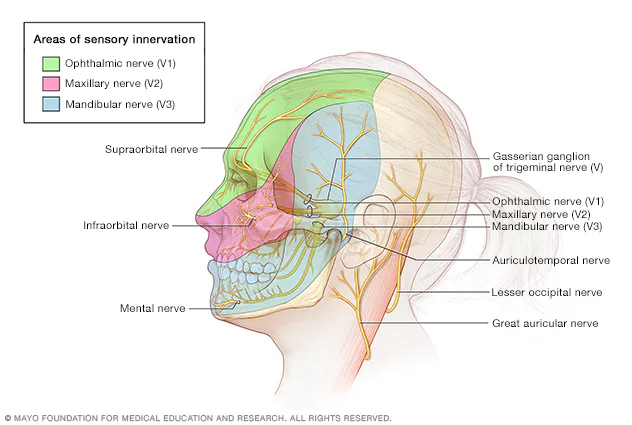- Kisan Sabhas: UP (1918), Bihar
- Bardoli Satyagraha (1928): Sardar Patel
- All India Kisan Sabha (1936)
- Trade unions: AITUC (1920), leaders like N.M. Joshi
- Labour strikes: Bombay, Madras textile mills
Historical Context
- Colonial Exploitation: The British colonial policies led to severe impoverishment of peasants and workers. High taxes, land revenue policies, and exploitative practices of zamindars (landlords) exacerbated rural distress.
- Industrialization: The slow pace of industrialization under British rule created a dual structure where traditional agrarian societies coexisted with emerging urban labor classes, leading to tensions and mobilizations.
Peasant Movements
- 1920s Peasant Movements: The 1920s saw significant peasant uprisings, such as the Champaran Satyagraha (1917) and the Kheda Satyagraha (1918), which were pivotal in mobilizing the rural population against oppressive practices.
- Demand for Rights: These movements focused on issues like land rights, fair rents, and the abolition of zamindari, reflecting a broader desire for social justice and equity within the nationalist framework.
Labor Movements
- Emergence of Organized Labor: The early 20th century witnessed the formation of trade unions in urban areas, advocating for workers’ rights, better wages, and working conditions.
- Role in Nationalism: Labor movements were often intertwined with nationalist aspirations, as leaders like Mahatma Gandhi recognized the importance of workers in the struggle for independence. The All India Trade Union Congress (AITUC) was established in 1920, highlighting the need for a unified labor front.
Interconnections Between Peasant and Labor Movements
- Shared Grievances: Both movements emerged from similar socio-economic grievances, such as exploitation and disenfranchisement, creating a natural alliance.
- Nationalist Leadership: Leaders like Gandhi and Jawaharlal Nehru emphasized the significance of both peasants and laborers in achieving independence, framing their struggles as part of the larger national movement.
- Collaboration: During events like the Non-Cooperation Movement (1920-1922) and the Quit India Movement (1942), peasants and laborers united to resist colonial rule, showcasing their collective strength.
Impact on Nationalist Discourse
- Influence on Policies: The demands of peasant and labor movements influenced post-independence policies, shaping agrarian reforms and labor laws aimed at addressing historical injustices.
- Legacy of Resistance: The participation of these groups in the nationalist struggle laid the groundwork for ongoing social justice movements in independent India, emphasizing the need for equity and representation.
Kisan Sabhas in Uttar Pradesh (1918) and Bihar
Kisan Sabhas played a crucial role in organizing peasants in their struggle against colonial exploitation in India. This overview focuses on the formation, objectives, key events, and impact of Kisan Sabhas in Uttar Pradesh in 1918 and in Bihar.
Historical Background
- Colonial Policies: The British colonial rule implemented exploitative agricultural policies, including high land revenue, which led to widespread discontent among peasants.
- Economic Distress: The agrarian economy faced challenges such as fluctuating crop prices, natural disasters, and oppressive zamindari systems, prompting a need for organized resistance.
Formation of Kisan Sabhas
Uttar Pradesh (1918):
- Initiation: The Kisan Sabha movement in UP was initiated in response to the grievances of farmers facing exorbitant taxes and oppressive landlords.
- Key Figures: Leaders like Mahendra Pratap Singh and other local leaders mobilized peasants to form the first Kisan Sabha in 1918 at Gorakhpur.
- Objectives: The primary aim was to address issues such as fair taxation, land rights, and protection from eviction.
Bihar:
- Emergence: The Kisan Sabha in Bihar emerged later, gaining momentum in the 1920s, particularly around 1928.
- Leadership: Influential leaders like Shah Muhammad Zubair and Sri Krishna Sinha were instrumental in organizing the Kisan Sabha in Monghyr.
- Focus Areas: The focus was on addressing the grievances related to zamindari exploitation, high rents, and the demand for land reforms.
Key Events and Activities
Mobilization and Protests:
- Uttar Pradesh: The Gorakhpur Kisan Sabha organized protests and meetings to raise awareness about peasant rights and mobilize support.
- Bihar: In 1928, the Kisan Sabha conducted significant rallies and demonstrations, notably during the Champaran Satyagraha, where peasants protested against oppressive plantation systems.
Collaboration with Nationalist Movements:
- Both Kisan Sabhas collaborated with larger nationalist movements, linking agrarian issues to the struggle for independence.
- They played a pivotal role during the Non-Cooperation Movement (1920) and the Civil Disobedience Movement (1930), emphasizing the importance of agrarian struggles within the broader national context.
Ideological Framework
- Social Justice: Kisan Sabhas aimed to promote social justice, emphasizing the rights of peasants and the need for equitable land distribution.
- Anti-Imperialism: The movements were inherently anti-colonial, seeking to challenge the exploitative structures imposed by British rule.
- Unity Among Peasants: They sought to unite different caste and community groups within the peasantry to strengthen collective bargaining power.
Impact and Legacy
- Policy Influence: The demands and activism of Kisan Sabhas significantly influenced agrarian policies post-independence, leading to land reforms and the establishment of cooperative societies.
- Continued Activism: The legacy of Kisan Sabhas persists in contemporary agrarian movements, highlighting ongoing issues of land rights, farmer distress, and social equity.
- Formation of New Organizations: The success of Kisan Sabhas laid the groundwork for future organizations and movements focused on agricultural and rural rights.
Bardoli Satyagraha (1928): A Detailed Overview of Sardar Patel’s Leadership
The Bardoli Satyagraha of 1928 is a significant episode in the Indian independence movement, marking a pivotal moment in the leadership of Sardar Vallabhbhai Patel. This overview provides a structured examination of the causes, events, strategies, and impacts of the Bardoli Satyagraha.
Historical Context
- Colonial Taxation Policies: The British government imposed a steep increase in land revenue by 22% in 1928, which was particularly burdensome for the agrarian community in Bardoli, Gujarat.
- Economic Distress: The region had already been affected by natural calamities, leading to crop failures and economic hardship for farmers. The tax hike exacerbated their plight, leading to widespread discontent.
Leadership of Sardar Vallabhbhai Patel
- Role as an Organizer: Patel, known as the “Sardar” (leader), emerged as a key figure in mobilizing the local farmers against the unjust tax increase. His previous experiences in the Kheda Satyagraha (1918) provided him with valuable insights into organizing mass protests.
- Vision and Strategy: Patel envisioned a non-violent resistance that would unite the peasantry and demonstrate their collective strength against colonial oppression.
Key Events of the Bardoli Satyagraha
- Formation of the Bardoli Taluka Kisan Sabha: In response to the tax hike, local leaders, under Patel’s guidance, established the Kisan Sabha to represent farmers’ grievances and coordinate the agitation.
- Non-Payment of Taxes: The farmers decided to collectively refuse payment of the increased taxes, marking the beginning of the Satyagraha. This act of defiance was rooted in the principle of non-violence and civil disobedience.
- Government Repression: The British authorities responded with force, confiscating lands, properties, and livestock of the protesting farmers. Over 1,200 properties were seized, and several farmers were jailed.
Strategies Employed
- Mobilization and Awareness: Patel emphasized grassroots mobilization, educating farmers about their rights and the importance of unity. Mass meetings and rallies were held to galvanize support.
- Legal and Political Pressure: The movement garnered attention from national leaders and organizations. Patel wrote letters to officials and appealed to the Indian National Congress for support, raising the profile of the struggle.
- Negotiation and Dialogue: Patel maintained open channels for negotiation with the government, seeking a peaceful resolution while standing firm against unjust taxation.
Resolution and Outcomes
- Government Concessions: The sustained pressure from the farmers, coupled with nationwide support for the movement, led the British government to negotiate. In August 1928, the government agreed to roll back the tax hike, return confiscated properties, and restore the rights of the farmers.
- Recognition of Patel: The successful resolution of the Bardoli Satyagraha elevated Sardar Patel’s stature as a prominent leader in the Indian independence movement, earning him the title “Sardar” among the masses.
- Impact on Future Movements: The Bardoli Satyagraha served as a template for future movements, highlighting the effectiveness of organized, non-violent resistance and collective action among peasants.
Legacy
- Strengthening of Peasant Movements: The success of the Bardoli Satyagraha inspired similar movements across India, reinforcing the role of peasants in the struggle for independence.
- Political Mobilization: It marked a significant turning point in the Indian National Congress’s approach to agrarian issues, leading to greater emphasis on rural concerns in the nationalist agenda.
- Contribution to Patel’s Leadership: The event solidified Patel’s reputation as a formidable leader and strategist, ultimately leading to his significant role in post-independence India as Deputy Prime Minister and Minister of Home Affairs.
All India Kisan Sabha (1936)
The All India Kisan Sabha (AIKS) was established as a significant organization representing the interests of farmers in India. This overview provides a structured explanation of its formation, objectives, key events, leadership, impact, and legacy.
Historical Context
- Colonial Exploitation: The British colonial regime implemented policies that severely affected agricultural productivity and farmers’ livelihoods, including oppressive taxation, zamindari systems, and land revenue laws.
- Peasant Discontent: The interwar period saw increasing unrest among peasants due to rising agrarian distress, leading to various local movements across different regions in India.
Formation of All India Kisan Sabha
- Inception: The AIKS was founded in April 1936 at the Lucknow session of the Indian National Congress, primarily at the initiative of leaders like Sahajanand Saraswati and other prominent figures in the peasant movement.
- Objective: It aimed to unite peasants across different regions to collectively address their grievances and advocate for their rights, reflecting a growing recognition of the importance of agrarian issues within the nationalist movement.
Objectives and Goals
- Advocacy for Rights: The primary goal was to advocate for the rights of peasants, including demands for fair land revenue assessments, abolition of zamindari, and protection against arbitrary evictions.
- Social Justice: The AIKS sought to promote social justice and improve the economic conditions of farmers, emphasizing equitable distribution of land and resources.
- Political Engagement: The organization aimed to engage with the broader nationalist movement, linking agrarian struggles to the fight against colonial rule.
Key Events and Activities
- Formation of State Units: Following its establishment, state units of the AIKS were formed in various provinces, allowing for localized mobilization and addressing specific regional issues faced by farmers.
- Organized Protests: The AIKS organized numerous rallies, protests, and campaigns to raise awareness about agrarian issues, often collaborating with other nationalist organizations.
- Role in the Civil Disobedience Movement: The AIKS played an active role during the Civil Disobedience Movement (1930-1934) and subsequent struggles, emphasizing the importance of agrarian issues in the national context.
Leadership and Structure
- Key Leaders: Sahajanand Saraswati emerged as a prominent leader of the AIKS, along with other influential figures like Swami Sahajanand, who advocated for the rights of the peasantry.
- Organizational Framework: The AIKS operated through a network of local committees and state units, facilitating grassroots mobilization and ensuring representation of diverse farmer interests.
Impact and Legacy
- Strengthening Peasant Movements: The AIKS significantly strengthened the peasant movement in India, providing a unified platform for farmers to voice their concerns and demands.
- Influence on Policy: The organization’s activism influenced agrarian policies and reforms in post-independence India, contributing to the establishment of land reform measures.
- Continued Relevance: The legacy of the AIKS continues to resonate in contemporary agrarian movements, highlighting ongoing issues of land rights, farmer distress, and social equity.
Trade Unions in India: All India Trade Union Congress (AITUC) and Leaders like N.M. Joshi
The All India Trade Union Congress (AITUC) is one of the oldest trade union organizations in India, established in the early 20th century. This overview provides structured notes on its formation, objectives, key leaders, significant events, and impact on the labor movement in India.
Historical Context
- Colonial Economy: The British colonial rule led to the exploitation of labor, poor working conditions, and inadequate wages for workers across various industries.
- Emergence of Labor Movements: Increased industrialization in India during the late 19th and early 20th centuries gave rise to organized labor movements, as workers began to demand better rights and conditions.
Formation of AITUC
- Inception: The All India Trade Union Congress was founded in 1920 in Bombay (now Mumbai) during a period of growing awareness and organization among workers.
- Founding Leaders: Key figures involved in its establishment included Lala Lajpat Rai, Joseph Baptista, N.M. Joshi, and Diwan Chaman Lal, who were instrumental in advocating for workers’ rights.
Objectives and Goals
- Representation of Workers: AITUC aimed to represent the interests of workers across different sectors, providing a unified voice for labor issues.
- Improvement of Working Conditions: The congress sought to improve labor conditions, including fair wages, reasonable working hours, and the right to organize.
- Political Engagement: AITUC aimed to link the labor movement with the broader nationalist struggle, emphasizing the interconnection between workers’ rights and India’s fight for independence.
Key Leaders
N.M. Joshi:
- Background: N.M. Joshi emerged as a prominent labor leader and played a crucial role in the AITUC’s formation and activities.
- Advocacy: He advocated for workers’ rights and was involved in organizing various strikes and labor actions.
- Legacy: Joshi’s efforts laid the groundwork for future labor activism in India, influencing subsequent generations of trade unionists.
Other Influential Leaders:
- Lala Lajpat Rai: As one of the founding leaders, he brought significant political influence and public attention to the labor movement.
- Joseph Baptista: His contributions helped in mobilizing workers and establishing a strong organizational framework for AITUC.
Significant Events and Activities
- First Conference: The first conference of AITUC was held in 1920, which brought together various trade unions and set the agenda for labor rights in India.
- Strikes and Protests: AITUC organized several strikes and protests to demand better wages and working conditions, often collaborating with other nationalist movements.
- Collaboration with Nationalist Leaders: The AITUC worked alongside the Indian National Congress and other political movements, linking labor rights to the broader struggle for independence.
Impact and Legacy
- Strengthening of Trade Union Movement: AITUC played a pivotal role in the development of the trade union movement in India, setting a precedent for organized labor activism.
- Influence on Labor Legislation: The efforts of AITUC and its leaders contributed to the establishment of various labor laws and regulations aimed at protecting workers’ rights post-independence.
- Continued Relevance: AITUC remains active today, continuing to advocate for workers’ rights and addressing contemporary labor issues in India.
Labour Strikes: Bombay and Madras Textile Mills
Labour strikes in the textile mills of Bombay (Mumbai) and Madras (Chennai) during the late 19th and early 20th centuries were significant events in the history of the labor movement in India. This overview provides structured notes on their causes, key events, outcomes, and impact.
Historical Context
- Industrialization: The late 19th century saw rapid industrialization in India, particularly in the textile sector, which became a major source of employment.
- Working Conditions: Workers faced poor working conditions, long hours, low wages, and lack of job security, leading to widespread dissatisfaction.
Causes of Labour Strikes
Economic Grievances:
- Low wages that did not match the rising cost of living.
- Poor working conditions, including inadequate ventilation and sanitation.
Exploitation by Employers:
- Harsh treatment by mill owners, including arbitrary deductions from wages and lack of grievance redressal mechanisms.
Emergence of Trade Unions:
- The formation of trade unions led to increased awareness among workers about their rights and the potential for collective action.
Key Strikes in Bombay Textile Mills
1896 Jute Mill Strike:
- One of the earliest strikes in the textile sector, initiated by workers demanding better wages and working conditions.
1918 Bombay Textile Strike:
- A significant strike involving thousands of workers, primarily focused on wage increases and better working conditions post-World War I.
- Resulted in violent clashes between workers and police, highlighting the tensions between labor and authority.
Key Strikes in Madras Textile Mills
1920 Madras Textile Mill Strike:
- Workers protested against wage cuts and poor working conditions, leading to a significant mobilization of the workforce.
- The strike was marked by solidarity among workers across different mills, showcasing the growing strength of organized labor.
1934 Madras Mill Workers’ Strike:
- This strike involved demands for a minimum wage and improvement in working conditions, reflecting broader trends in labor activism during this period.
Outcomes of the Strikes
Negotiations and Concessions:
- Many strikes led to negotiations between workers and mill owners, resulting in some concessions regarding wages and working conditions.
Formation of Trade Unions:
- Strikes catalyzed the growth of trade unions, providing a formal structure for workers to organize and advocate for their rights.
Legislative Changes:
- Increased awareness of labor issues contributed to the eventual introduction of labor laws aimed at protecting workers’ rights in the post-independence era.
Impact on the Labour Movement
Empowerment of Workers:
- The strikes empowered workers by demonstrating the effectiveness of collective action and the importance of solidarity.
Influence on Nationalist Movements:
- Labor strikes became intertwined with the broader nationalist struggle, as leaders recognized the significance of worker rights in achieving independence.
Legacy of Activism:
- The legacy of these strikes paved the way for future labor movements and continued advocacy for workers’ rights in various sectors.
MCQ:-
UPSC Prelims 2003:
Question: The leader of the Bardoli Satyagraha (1928) was:
(a) Sardar Vallabhbhai Patel
(b) Mahatma Gandhi
(c) Vithalbhai J. Patel
(d) Mahadev Desai
Answer: (a) Sardar Vallabhbhai Patel
UPSC Prelims 2019:
Question: Consider the following pairs:
Movement/Organization — Leader
- All India Anti-Untouchability League — Mahatma Gandhi
- All India Kisan Sabha — Swami Sahajanand Saraswati
- Self-Respect Movement — E. V. Ramaswami Naicker
Which of the pairs given above is/are correctly matched?
(a) 1 only
(b) 1 and 2 only
(c) 2 and 3 only
(d) 1, 2 and 3
Answer: (d) 1, 2 and 3
UPSC Prelims 2014:
Question: Which of the following statements is/are correct about the trade union movement in India?
- All India Trade Union Congress (AITUC) was founded in 1923.
- In 1923, the first May Day was celebrated in India in Madras.
Select the correct answer using the code given below:
(a) 1 only
(b) 2 only
(c) Both 1 and 2
(d) Neither 1 nor 2
Answer: (b) 2 only








